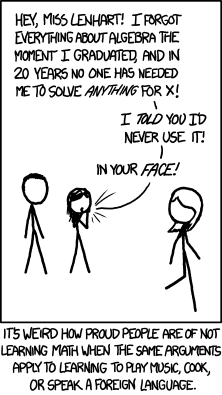

The main readings for this course come from my text
Principles
of Mathematics and Logic. Individual chapters are
cited below, unit by unit, so you know when you should read each
chapter (two chapters per unit). A copy of an older edition of the
text is also available in the Maths Lab
(H211).
(Use this when you
need to but be sure to check with your copy of the current edition
afterwards - changes have been made and typos fixed.)
In addition, some sections of another text, the Alberta
Notes, may also be useful - I have made two chapters available
suitably linked in the units where they are relevant. You should be
aware that this
and other texts may treat the material differently
from my text - in cases where there are differences, my text is
definitive for the purposes of this course.
You should also look at the Entertainments section below.
Problems?
Click here if you are having trouble
with PDF files.
Note: When you read mathematics, it is important
to engage the text actively, not passively. You should have pencil
and paper beside you, and try to follow each statement,
doing the suggested calculations or reasoning yourself. It
is not a novel or short story, whose meaning will just flow over you,
but a dialogue, only one side of which is on the page. You must
provide the other side yourself!
Here is an
excellent article on how to read mathematics if you want more
"advice".
(BTW: the book [Emblems of Mind by Edward
Rothstein]
from which the quotes are taken is one I recommend in the
Entertainments below. It's about
Maths & Music, and might give you a different insight into the
nature of maths.)
NOTE: If you find typos or other errors, or if you have questions about the text, please let me know. Old (very old!) editions of the text have a typo on p.28 -- the corrected truth table may be seen here. This has been corrected in recent editions, including the on-line version of Chp 1. In addition there are also some minor typos in early editions of the text in some of the exercises (especially in Chapters 3 and 5). This has also been fixed in recent editions of the text, so please check this if you are using an older edition.
Unit 1
Unit 3
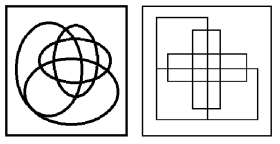
Unit 4
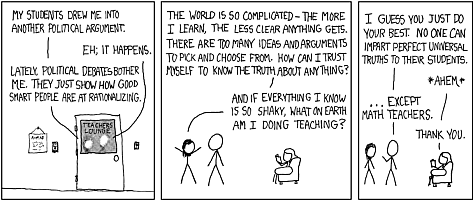
Unit 5
Extra reading for this section:
We shall cover one of the following topics this semester
Extra reading for this section:
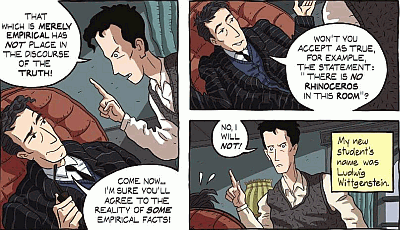
Extra reading for this section:
General
Unit 1
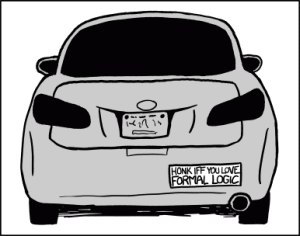
Unit 2,3
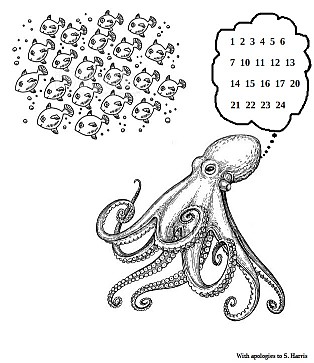
Unit 4
Note: Some youtube links may not work in the
"split screen" view of this page;
if so, just open the link in a new browser window.

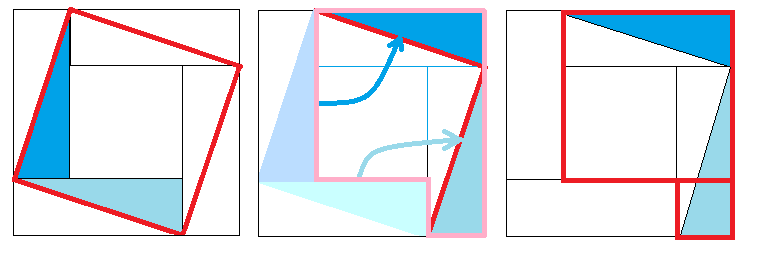
Unit 5
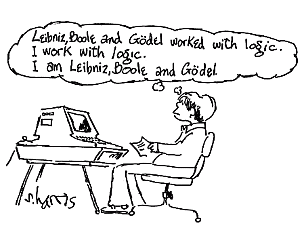
Unit on Gödel's Incompleteness Theorem
Unit on Categories, logics, & linguistics
Note: If you find typos or other errors, or if you have questions about my answers (e.g. at the end of each chapter), please let me know.
Additional assignments, comments, solutions, and helpful hints will be posted in this section of the webpage, as relevant. I'll alert you to any additions in class.
Unit 1: Your first reading assignment is Chapter 1
You should do the exercises in Chp 1, especially (Parsing)
Exercise 1.3.6; (Substitution) Exercise 1.3.8; (Truth tables)
Exercise 1.3.10; (Tautology) Exercise 1.3.15; (Translation)
Exercises 1.4.1, 1.4.2.
Next, try the Knights & Knaves Problems (Exercises 1.5.1). (Typo: "knives" should be "knaves" on p.36, Number 11.)
In addition, you will need to read Chapter 2 before the first test.
Unit 2: The main emphasis in this section is Chapter 3. Be sure to read this chapter carefully, and to do all the exercises. This is a tricky topic - some find it the hardest of the course - but if you pay attention to what you can learn from the exercises, you will succeed. Ask me for help if you need it.
Step-by-step explanation of the
"Vulcans, Romulans, and Klingons" problem. (End of section 3.2)
Summary sheet for natural
deduction (Big print
version for those with poor eyesight)
(For now - till Chp 5 - ignore the bits about ∀ and ∃.)
The exercises done in class
(with answers)
(These also appear in the book.)
An example of the use of the double negation
rule (and the corresponding tableaux)
Chapter 4 is somewhat less technically demanding, but again, do the exercises to get a feel for this topic.
Here is a tableau for the "God" problem, Exercise 3.3.2#5 - the derivation is in the text (end of chp 3).
We would have done a worksheet on tableaux (and more derivations!) in
Friday's class, but for the (rather important and impressive!) climate
demonstration.
Here are the exercises and solutions to
that worksheet. If there is time and "demand", we can do this in
Monday's class.
In the meantime, look at Practice Test 2, below.
Just for fun(!): Some more logic puzzles (the same with answers)
Unit 3: Read Chapter 5 carefully.
This unit continues Unit 2 - in particular, you still need to be
able to construct derivations for arguments, but now in predicate
logic as well. There is a lot of help in the examples in the text - do
them carefully, and of course, do the exercises.
Solutions to the workshop problems (and
the problems themselves if you've lost your copy)
The strategy sheet is still useful
as it includes the quantifier rules. (Similarly, for the
2-pages-in-1 version.)
You are required also to read the book/article
On Bullshit by Harry Frankfurt. You should also look at some
of the other readings about his article, as given above.
Check out some questions about the
book to help you prepare for (the discussion and) the test.
Read Chapter 6 - Set theory. This should be somewhat less stressful, after the rigours of predicate logic. As ever: do the exercises.
Unit 4: Read Chapters 7 and 8 (Numbers and Number Theory).
Remember:
you will need a simple (cheap!) calculator, able to do simple
arithmetic. (Or else you can do the calculations in your head!)
Please do not plan to use your cell phone as a calculator, as
this will not be permitted on the next test (indeed as it is not
permitted on any test).
As always, be sure to do all the exercises in the text.
Unit 5: Read Chapter 9 and the appropriate section (10.1 or
10.2) of Chapter 10.
As ever, there are exercises in my
text; try them (solutions and/or hints at solutions are given at the
end of the section). They will be the basis of Test 5.
You may also find it helpful (even essential!) to look at the extra readings in the Entertainments section.
And finally: what are "the Liberal Arts" (classically)?
They are (were?): The Trivium: Grammar, Logic,
and Rhetoric;
and The Quadrivium: Arithmetic, Music (meaning "harmonic" ratios of
numbers), Geometry, and Astronomy.
[The
Liberal Arts represented on Chartres Cathedral - picture at end
of article]
We've covered most of them, at least partially, this semester.
(Well, maybe not rhetoric -
I'll leave that to your other courses ...
![[wink]](wink-s.jpg) )
)
Practice Test 2 (4 Oct 2019)
Some hints at where you can find the solutions.
A former (actual) Test 2 (with answers)
Practice Test 3 (the format)
(25 Oct 2019)
Practice Test 3 (an actual former test)
[Answers]
Some sample questions about Harry's book
(Prepare yourself for these questions!)
Practice Test 4 (15 Nov 2019)
Another Practice Test
(Answers)
Remember to bring your calculator (and to know how
to use it!)
Test 5 (6 Dec 2019)
(but no answers!)
Hints (instead!) for Test 5
Comments?
You are permitted to bring to the test an index card (or piece of
paper) 5in by 3in (13cm by 8cm) with (almost!) whatever notes you want
written on it (but just one side please, and don't write
microscopically(!), and no complete answers). Plan it carefully!
I do insist the notes are written by you - no xeroxes!;
do not use somebody else's notes, although you may plan notes together.
Write your name on your notes card -
you must hand in your notes with your test, when you finish it
Friday.
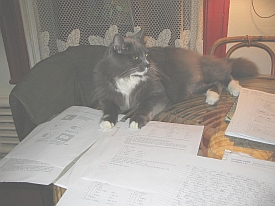


|
| Become a friend of Dusty's on Facebook Dusty's "late" friends |
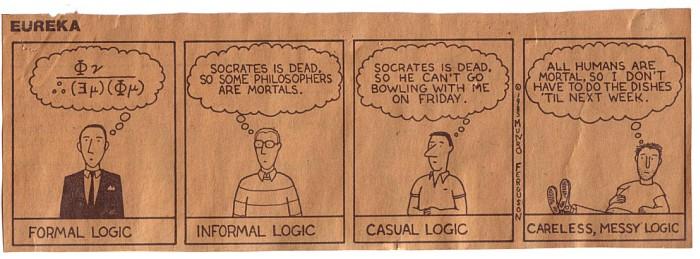
|

|

|

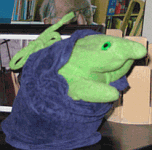
|